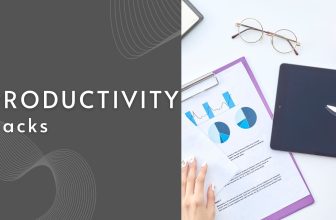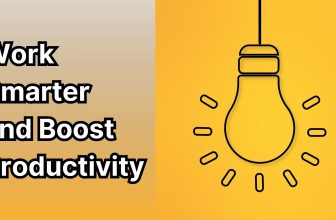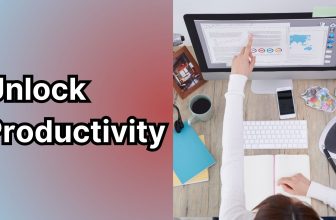In today’s fast-paced world, managing your time effectively is essential for boosting productivity, achieving your goals, and maintaining a healthy work-life balance. Whether you’re a busy professional, an entrepreneur, or simply looking to optimize your daily routine, mastering time management is key. So from my 10+ years of personal experience as an entrepreneur, I’m going to share 5 tips for better time management that are relevant today.
The goal of this article is to guide you on how to prioritize tasks, schedule your day efficiently, and focus on what truly matters. Effective time management isn’t just about accomplishing more in less time; it’s also about reducing stress, improving overall well-being, and ensuring time for both short-term and long-term goals.
By adopting the right strategies, you can transform your approach to work and life, making every moment count. In the following sections, we’ll explore practical and proven techniques to help you enhance productivity, manage your time effectively, and lead a more balanced life.
1. Leverage Technology for Enhanced Productivity
In the modern era, technology plays a pivotal role in enhancing productivity and streamlining time management. Here are some ways you can leverage technology to your advantage.
Choose the Right Tools
Selecting the right time management tools can significantly impact your productivity. There are numerous apps and software designed to help you manage your time more effectively. For instance, tools like Todoist, which offers a robust set of features including filters, labels, and integration with other apps, can help you coordinate both work and personal tasks seamlessly.
Another option is Reclaim AI, which uses artificial intelligence to schedule your daily habits, meetings, and focus work, ensuring you have the ideal times for each activity without manual intervention. If you’re looking for something more comprehensive, platforms like monday.com, Smartsheet, and Wrike provide advanced project management features that can help you track time spent on tasks and projects, as well as manage your workload efficiently.
Integrate Virtual Assistants
Virtual assistants can be a game-changer in your time management strategy. Tools like Zapier allow you to automate workflows by integrating various apps and services, reducing the time spent on repetitive tasks. For example, you can set up Zapier to automatically log your time in a time-tracking app like Clockify or Harvest whenever you complete a task in your project management tool. This automation helps in maintaining accurate time records without the need for manual entry.
Additionally, AI-driven tools like Reclaim can act as virtual assistants by scheduling your day based on your habits and priorities, ensuring that you have dedicated blocks of time for focus work, meetings, and even simple tasks like taking a lunch break. By leveraging these technological advancements, you can create a more streamlined and efficient time management system that helps you stay focused and productive throughout the day.
2. Implement Advanced Time-Blocking Techniques
Time-blocking is a powerful time management framework that involves scheduling specific blocks of time for different tasks. Here’s how you can take this technique to the next level.
Customize Your Calendar
To make time-blocking truly effective, it’s important to customize your calendar to fit your unique needs and work style. This involves several key steps:
Group Similar Tasks
Grouping similar tasks together, a technique known as task batching or chunking, helps reduce context-switching and boosts productivity. For example, dedicate a specific time block to checking and responding to emails, rather than scattering this task throughout your day.
Use AI Assistants
Integrate AI-driven tools like Reclaim.ai, Motion, or Clockwise into your time-blocking routine. These tools can automatically find the best times for your tasks and adjust your schedule as needed, ensuring that your focus blocks remain uninterrupted.
Utilize Time-Tracking Apps
Tools such as Toggl Track, Clockwise, and RescueTime can provide valuable insights into how you spend your time. These apps help you identify patterns and areas where you can optimize your time blocks, ensuring that you allocate the right amount of time for each task.
Schedule Downtime
Scheduling downtime is just as important as scheduling work time. Here’s why and how you should do it:
Importance of Breaks
Taking regular breaks is essential for maintaining productivity and avoiding burnout. By scheduling downtime, you ensure that you have dedicated periods for rest and relaxation, which can help you recharge and return to your tasks with renewed focus and energy.
Time Blocks for Self-Care
Include time blocks for activities such as lunch, exercise, or meditation. For instance, you might schedule a 30-minute break for lunch or a 1-hour block for a workout. This not only helps maintain a healthy work-life balance but also ensures that you prioritize your well-being.
Avoid Overcommitting
Be realistic when scheduling your day. Avoid overcommitting by leaving some buffer time between tasks. This allows for unexpected interruptions or tasks that take longer than anticipated, preventing your schedule from becoming overly rigid and stressful.
By customizing your calendar and scheduling downtime effectively, you can create a balanced and efficient time-blocking system that supports both your productivity and your overall well-being.
3. Focus on Outcome-Oriented Task Management
Shifting from a task-focused approach to an outcome-oriented one can significantly enhance your productivity and align your efforts with your long-term goals. Here’s how you can implement this strategy.
Set Clear Objectives
Outcome-oriented task management begins with setting clear, specific, and measurable objectives. This approach ensures that every task you undertake is aligned with your overall goals.
- Define Specific Goals: Clearly outline what you want to achieve. For example, instead of having a vague goal like “improve productivity,” set a specific goal such as “complete all urgent tasks within the next 48 hours” or “increase project completion rate by 20% within the next quarter.”
- Make Goals Time-Bound: Assign deadlines to your goals to create a sense of urgency and focus. This helps in prioritizing tasks and allocating the necessary time and resources.
By setting clear objectives, you ensure that every task you perform is purposeful and contributes to your larger goals.
Review and Adapt
Regular review and adaptation are essential components of outcome-oriented task management.
- Regular Progress Checks: Schedule regular reviews of your progress to assess whether you are on track to meet your objectives. This could be daily, weekly, or monthly, depending on the nature of your tasks and goals.
- Adjust Your Strategy: Be flexible and willing to adjust your strategy if certain tasks or approaches are not yielding the desired outcomes. For instance, if you find that a particular task is taking longer than expected, you might need to break it down into smaller, more manageable subtasks or delegate parts of it to team members.
This adaptive approach ensures that you stay focused on the outcomes and make necessary adjustments to achieve them.
By focusing on outcomes rather than just tasks, you can ensure that your efforts are always directed towards achieving your long-term goals, leading to greater productivity and satisfaction.
4. Prioritize Mental and Physical Health
Maintaining both mental and physical health is essential for effective time management and overall productivity. Here are some strategies to help you prioritize your well-being.
Regular Exercise
Incorporating regular exercise into your routine can have a significant impact on your productivity and work performance.
- Improves Concentration and Energy: Exercise, whether it’s low-intensity aerobic activities like jogging or swimming, or strength training exercises such as lifting weights or doing push-ups, enhances concentration and boosts energy levels. This helps you stay more alert and ready to tackle tasks efficiently.
- Reduces Stress and Fatigue: Physical activity is known to lower stress and combat fatigue. By managing stress levels, you can handle your workload better and avoid burnout.
- Decreases Sick Leave: Employees who engage in regular physical activity tend to miss fewer workdays due to illness. For example, physically active employees miss an average of 4.1 fewer days of work per year compared to their inactive counterparts.
- Workplace Initiatives: Many companies are implementing workplace exercise programs, such as allowing time for exercise during work hours or using standing desks. These initiatives promote a healthier workforce and help reduce the risk of chronic diseases.
Mindfulness and Meditation
In addition to physical health, mental well-being is essential for maintaining productivity and focus.
- Reduces Stress and Burnout: Mindfulness and meditation practices effectively lower occupational stress and combat burnout. Regular mindfulness exercises enable you to manage stress more effectively, leading to improved work performance.
- Improves Focus and Clarity: Mindfulness and meditation enhance mental clarity and focus. By dedicating just a few minutes daily to these practices, you can sharpen your ability to concentrate on tasks and make better decisions.
- Enhances Overall Well-being: Incorporating mindfulness and meditation into your routine improves your overall quality of life. This positive shift reflects in your work, enabling you to manage time more effectively and achieve your goals.
By prioritizing both physical exercise and mental well-being through mindfulness and meditation, you can create a balanced and healthy lifestyle that supports your productivity and time management efforts.
Conclusion
Effective time management is the cornerstone of productivity, stress reduction, and maintaining a healthy work-life balance. By leveraging technology to enhance productivity, implementing advanced time-blocking techniques, focusing on outcome-oriented task management, and prioritizing both mental and physical health, you can significantly improve your ability to manage time.
Remember to set clear objectives, customize your calendar, schedule downtime, and regularly review and adapt your strategies. Good time management not only reduces stress but also increases productivity and improves overall job satisfaction and well-being.
Take action today by integrating these tips into your daily routine. Start by setting SMART goals, using time-blocking methods, and prioritizing your well-being. With consistent practice and adaptation, you will find yourself more focused, productive, and better equipped to achieve your long-term goals.
FAQ
How do you prioritize tasks when faced with multiple competing demands on your time?
To prioritize tasks when faced with multiple competing demands, start by identifying conflicting priorities and assessing their alignment with project and business goals. Utilize prioritization frameworks like the Eisenhower Matrix or MoSCoW method to distinguish between urgent and non-urgent tasks. Organize tasks based on their importance and identify dependencies to ensure efficient resource allocation and workflow management.
What techniques or tools do you use to create a daily or weekly time management plan?
To create a daily or weekly time management plan, consider these techniques:
- Time Blocking: Divide your day into blocks of time assigned to specific tasks, including buffer times for adjustments.
- Pomodoro Technique: Work in 25-minute intervals followed by short breaks to maintain focus and avoid burnout.
- Zero-Based Blocking: Account for every minute of your day, scheduling all activities, including non-negotiable commitments and breaks.
- Eisenhower Matrix: Categorize tasks based on urgency and importance to prioritize them effectively.
How do you differentiate between urgent and important tasks, and how do you handle each?
To differentiate between urgent and important tasks, assess whether a task requires immediate attention (urgent) or contributes to long-term goals (important). Handle them as follows:
- Urgent and Important: Address immediately (e.g., crises, deadlines).
- Important but Not Urgent: Schedule for later (e.g., long-term goals).
- Urgent but Not Important: Delegate to others (e.g., interruptions, favors).
- Not Urgent and Not Important: Delete or minimize (e.g., non-essential tasks).
What software or apps do you find most helpful for managing time and tracking project deadlines?
For managing time and tracking project deadlines, consider tools like Asana, monday.com, and Wrike:
- Asana: Known for its ease of use and comprehensive feature set, including time tracking and timesheets.
- monday.com: Recognized for its workflow automation and customizable dashboards.
- Wrike: Ideal for large projects and offers robust customization options.
Read Next
Time Management Frameworks: Improve Productivity Now

10 Ways to Improve Yourself as a Man Every Day

7 Reasons to Embrace Failure for a Stronger You







